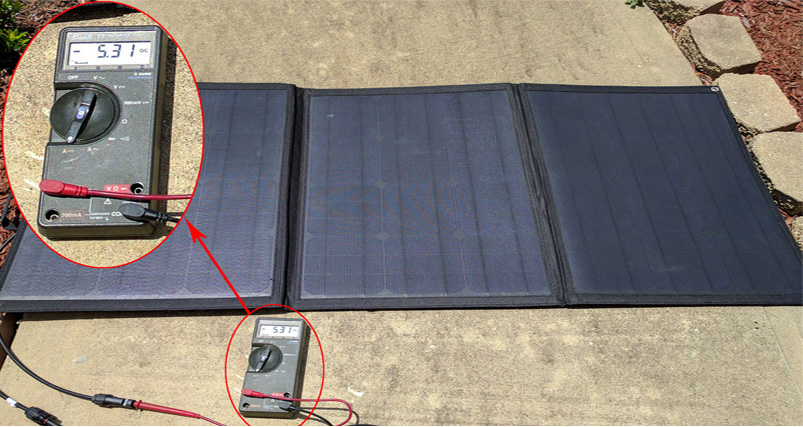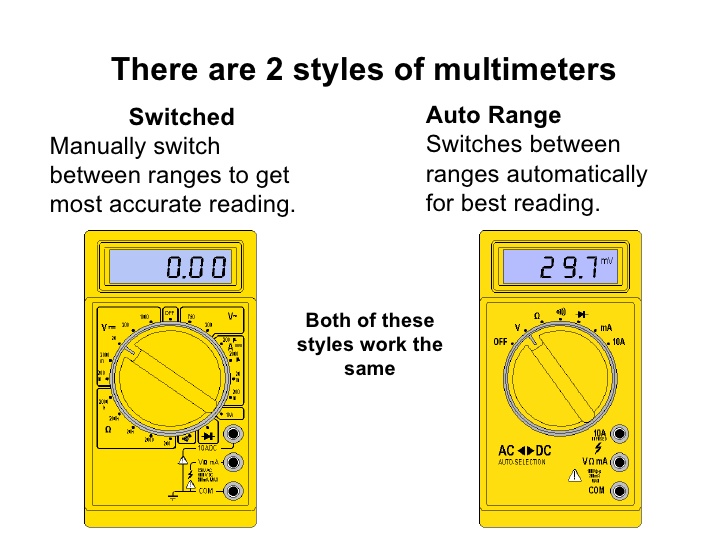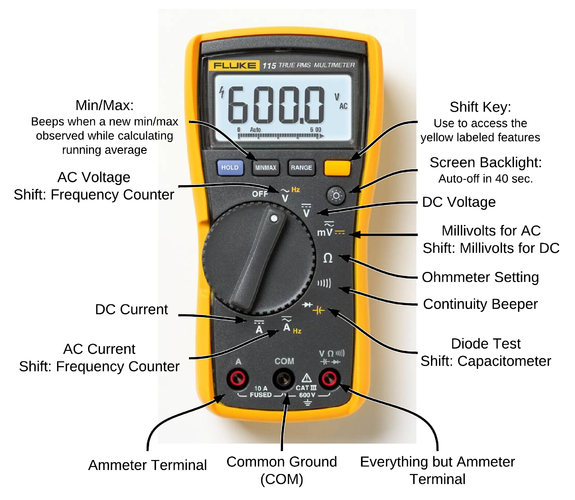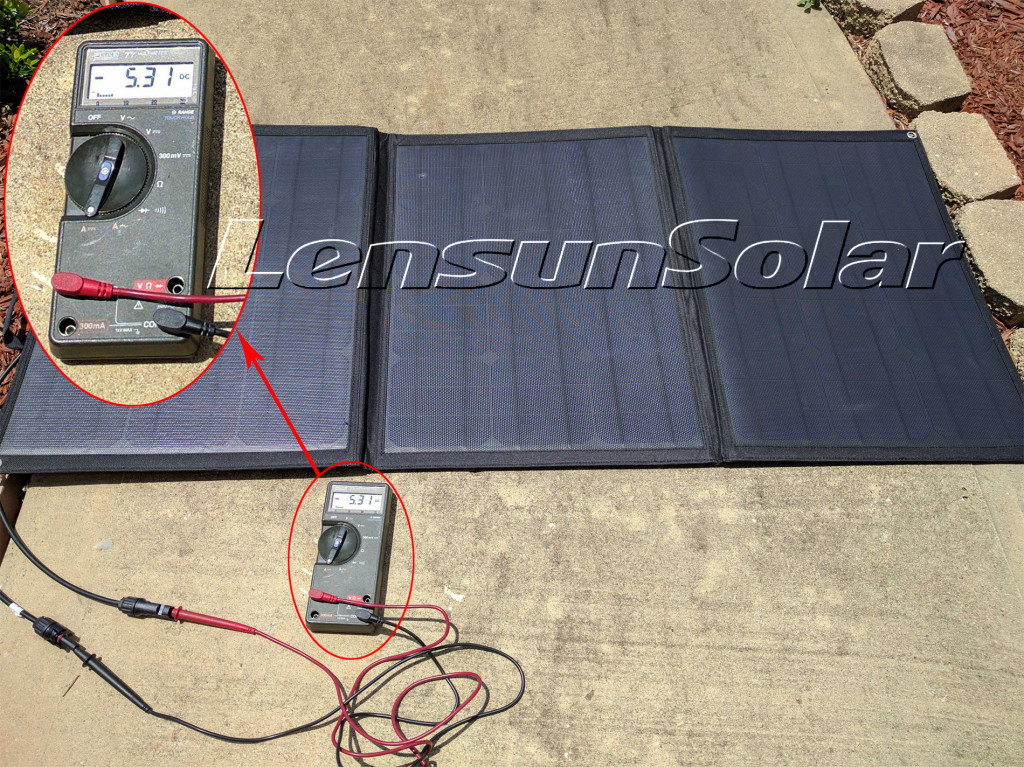
How to Use Multimeter to Measure Volts and Amps of Solar Panel
Lensun have been sold solar panels from 2008. There are some after-sale problem of solar panels from our customers. We find that the testing progress and testing data from some of our customers is not correct for using multimeter. Therefore, We write an article about how to use multimeter. We hope to help you. Thanks.
How do you make sure you get enough output to satisfy your electric needs when you buy and install solar panels?
Most camping and travelling need more than one solar panel to run their whole electric system.
However, how do you verify if your solar panel is working? While checking if your 12V battery can run devices or vehicles is a pretty good sign that everything is well, this doesn’t always tell you how the panel is doing. The fact is that solar panels are passive energy gatherers and we can’t tell much just looking at or touching them. The best way to check for signs of life is to measure a solar panel’s volts and Amps.
Properly testing your solar panels is a very important but often overlooked procedure. You wouldn’t believe how many people completely skip testing solar panels and forget to confirm their solar power output before installing them.
By learning how to test solar panels you can insure that you don’t waste your time installing panels that you’ll have to take down and fix.
Before you start:
1.Find the voltage (V) and current (A) ratings of your panel (you can usually find these written on the back of the panel).
2.Check that sunlight conditions are suitable for producing readings on your system. To obtain the rated output of your panel you will need full, bright sunlight falling directly onto the panel. Remember, no sun no power.
3. Make sure you understand how to use the multimeter, and that you are using appropriate settings for the power you expect to measure.
Using a Multimeter to Test Solar Panels
You can measure Volts and Amps with a special tool called a multimeter. There are 2 styles of multimeters in the following.
When you use the switched multimeter.Please select the appropriate function on your multimeter. Most multimeters have functions for measuring several different quantities. To measure amperage or Voltage of solar panel, you need to set the function to DC amperage or DC Voltage.
Testing Solar Panels For Volts
To test a 18V solar panel voltage output directly, put your solar panel in direct sunlight, set your multi-meter to the DC “volts” setting.
You want to choose a voltage range capable of displaying the maximum possible voltage of the panel in open circuit, This means that if you have a panel rated for 20 volts, you should set the multi-meter to read up to 200 volts to ensure that you receive an accurate reading.
Now the negative (black) probe connects to the port labeled COM and the red (positive) probe connects to the port usually labelled V/Ω/mA,Then simply touch the multi-meter probes with the solar panel leads, matching their corresponding polarity (red to red, black to black) You will receive a fairly accurate reading of the volts created by your panel. If the panel is new, then the voltage should be very close to the panel’s rating. For used panels, a slightly lower voltage should still be acceptable, although this is up to your own preference.
(Sample Testing: Lensun 100W Folding Solar Panel)
Testing Solar Panels For Amps
To test solar panel amperage output, put your solar panel in direct sunlight, set your multi-meter to the DC “amps” setting.
To ensure that you don’t blow your device’s fuse, set the maximum amperage sensitivity to well above your expected reading. Please adjust black probe connnects to the port labeled COM and the red probe connects to the port usually labelled 10A.
(Sample Testing: Lensun 100W Folding Solar Panel)
After doing your solar panel testing, you should find that the solar panel output (for the solar panel you built) is about 21 volts and 5 amps.
Whenever you have these two values you can figure out the wattage by multiplying them together.
Volts x Amps = Watts
So… 21 Volts x 5 Amps =105Watts
And if you are testing a charge controller you will need to make sure that the battery is NOT fully charged otherwise it will not be able to accept current.
The first two measurements use the solar panel on its own. When disconnecting the solar panel, regulator and battery, take care to disconnect the panel from the regulator first, and then disconnect the regulator from the battery. When reconnecting, connect the regulator to the battery first, and then connect to the solar panel. This will avoid causing damage to the regulator.
LensunSolar is professional manufacturer of hood solar panel, flexible solar panel, foldable solar panel, solar blanket, and waterproof solar panel, more about details just check our website www.lensunsolar.com
If any questions or advice, please contact us or call us in the following information from Mondays to Fridays. Any wholesale request just call us or email us, thanks.
Contact information
www.lensunsolar.com
Tel: US +1 720-608-1288
China: +86 15759769602
Whatsapp: +86 15759769602
Skype: lensunsolar
Email: [email protected], [email protected]







I have 4 340 watt 24 volt panels and 8 150 amp 12 volt batteries. Batteries are connected in series and panels are connected parallel already. How do I test the output and what reading should I expect to see?
hi Anthony, we suggest you test each solar panel separate. check here how to test https://www.youtube.com/watch?v=8eK1Qts1RbY